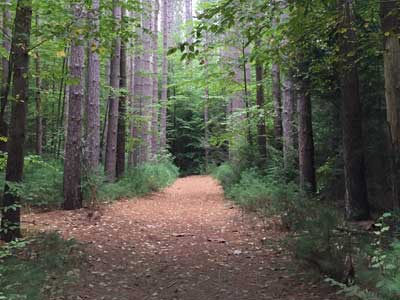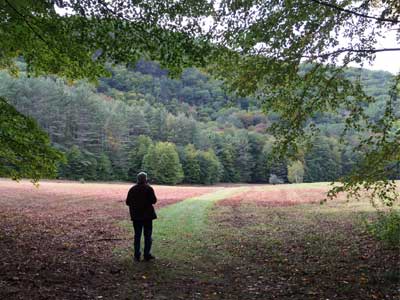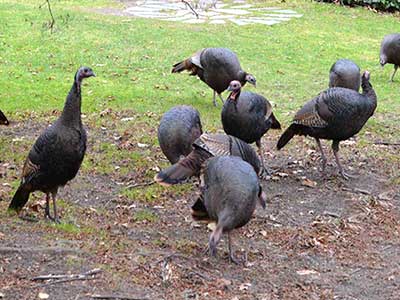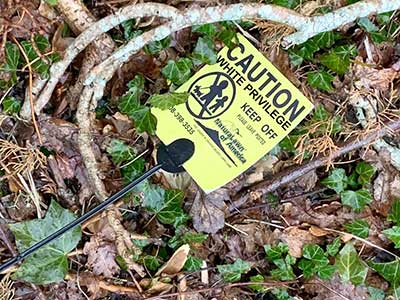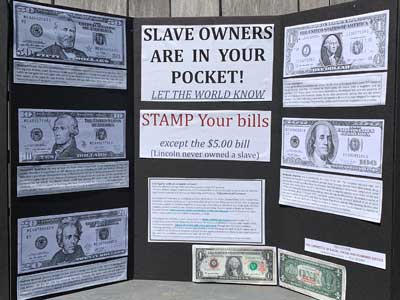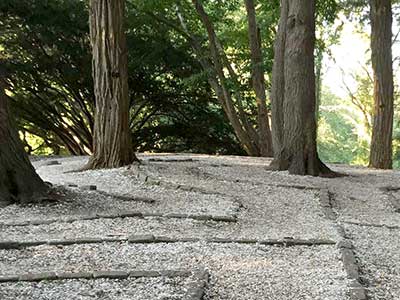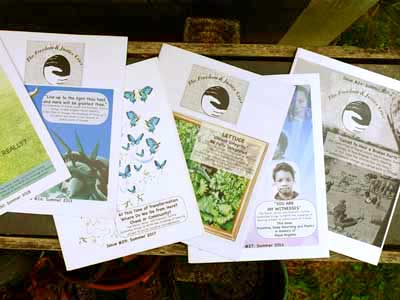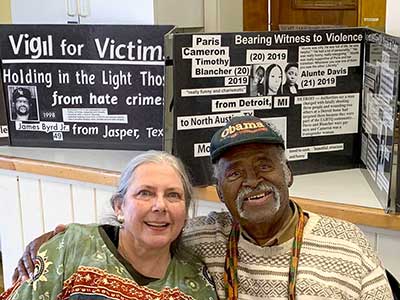by history.com Editors| Updated January 2022
Jim Crow laws were a collection of state and local statutes that legalized racial segregation. Named after a Black minstrel show character, the laws—which existed for about 100 years, from the post-Civil War era until 1968—were meant to marginalize African Americans by denying them the right to vote, hold jobs, get an education or other opportunities. Those who attempted to defy Jim Crow laws often faced arrest, fines, jail sentences, violence and death.
TAGS: [Racial Terrorism] [2020’s] [Systemic Racism] [Silencing POC] [Racial Covenants] [History] [Collective Action] [Denial] [Politics] [White Supremacy] [White Culture] [White Privilege] [Black Lives Matter] [Policing] [Prison System] [Housing] [Justice System] [Advocacy] [Role Model] [Definitions]
Resource Links Tagged with "2020’s"
Five Ideas to Change Teaching about Thanksgiving, in Classrooms and at Home
by Renée Gokey | November 2021
Between Thanksgiving and Native American Heritage and Month, November is go-time for teaching and learning about Native America. Here, parent and museum educator Renée Gokey shares simple ways to make the responsibility less daunting. In addition to briefly describing strategies for learners K–12, Renée links to teaching resources from the museum and other organizations. And she notes that students can use Thanksgiving and their new tools for thinking about culture to learn and share more about their own family’s history and traditions. This article has many great tips and teaching links.
TAGS: [Individual Change] [2020’s] [Teachers] [Tips-Dos/Don’ts] [Indigenous] [History] [Social Justice]
Penobscot Nation Members Do Not Want Ancestors’ Scalping Whitewashed; A new educational film produced by the tribe explains how settlers were encouraged to scalp natives for cash bounties.
by David Sharp | December 2021
Most Americans know about atrocities endured by Native Americans after the arrival of European settlers: wars, disease, stolen land. But they aren’t always taught the extent of the indiscriminate killings. Members of the Penobscot Nation in Maine have produced an educational film addressing how European settlers scalped — killed — Indigenous people during the British colonial era, spurred for decades by cash bounties and with the government’s blessing. “It was genocide,” said Dawn Neptune Adams, one of the three Penobscot Nation members featured in the film, called “Bounty.” She said the point of the effort isn’t to make any Americans feel defensive or blamed. The filmmakers say they simply want to ensure this history isn’t whitewashed by promoting a fuller understanding of the nation’s past. At the heart of the project is a chilling declaration by Spencer Phips, lieutenant governor of the Province of Massachusetts Bay.
TAGS: [Racial Terrorism] [2020’s] [Indigenous] [Systemic Racism] [History] [Social Justice] [White Supremacy] [White Privilege] [White Culture] [Politics] [Economics] [Teachers] [White Blindness]
Broken System Can’t Keep Track of Native Deaths; from Medical Health Privacy Laws to a Maze of Siloed Information Systems, a True Accounting of COVID-19’s Impact on Indian Country is Impossible to Know
by Jourdan Bennett-Begaye, Sunnie Clahchischiligi, and Christine Trudeau | June 2021
In May of 2020, the Navajo Nation reported one of the highest per-capita COVID-19 infection rates in the United States. Since that milestone, official data reveals that the Navajo Nation has been one of the hardest-hit populations during the pandemic. The Navajo Nation boasts the largest population of any Indigenous nation in the United States, and thousands of Navajos live outside the nation, in towns along the border, cities across the country, and in other parts of the world, making it difficult to tally the virus’ impacts on Navajo citizens. It’s made worse by a labyrinthian system of local, state, federal and tribal data-reporting systems that often do not communicate with each other or share information.
TAGS: [Assumptions] [2020’s] [Health Disparities] [Indigenous] [Politics] [Myths] [Systemic Racism] [Silencing POC] [Denial]
The Indigenous Connection to the Underground Railroad
Submitted by Roy Finkenbine | June 2021
Most stories of the Underground Railroad follow the narrative of white people helping Black people escape slavery, but overlook the involvement of Indigenous allies who often risked their own lives to help freedom seekers cross into Canada safely. Historian Roy Finkenbine is among those rewriting that history. He’s working on a book tentatively called, Freedom Seekers in Indian Country, while teaching African American history at the University of Detroit Mercy. He spoke with Falen Johnson, host of Unreserved, about his research on Indigenous involvement in the Underground Railroad, and why he feels a moral obligation to write about it. What questions are you trying to answer in your upcoming book, Freedom Seekers in Indian Country? I’m looking at how and why Native Americans helped freedom seekers. How they helped includes providing sanctuary among their communities – often to boost their populations – and in assisting people to cross the border. They shared a kinship based on a common enemy, if we can use that term, in terms of white expansionism. Many groups like the Ojibwa referred to African-Americans as cousins and brothers. Peter Jones, a [Mississauga] missionary, said, and I’m paraphrasing here, “Negroes,” as he said, “have it even worse because of the iron bands of slavery. So we have an obligation to help.”
TAGS: [Assumptions] [2020’s] [Slavery] [Indigenous] [History] [Myths] [White Culture] [White Privilege] [White Supremacy] [Systemic Racism]
Time Will Not Heal: 5 Ways to Address the Inheritance of Black Poverty, Starting Now
by Richard V. Reeves | June 2021
In white families, poverty is almost never passed down “like a disease”. Our just-published paper shows that just 1.3% of whites are experiencing third-generation poverty. By comparison, more than one in five Black Americans (21.3%) are in the third generation of their family to be poor. (The full paper, co-authored with Scott Winship and Santiago Deambrosi of AEI as well as Christopher Pulliam and Ariel Gelrud Shiro from our own team, is “Long Shadows: The Black-white gap in multigenerational poverty”). Our paper represents the first attempt to analyze income mobility patterns across three generations, back to the Civil Rights era, and it is an empirical challenge. But the overall pattern is starkly clear. Black Americans are sixteen times more likely to be in the third generation of poverty, defined as the bottom fifth of the income distribution (i.e. less than around $48,000 a year for a family of four in today’s money).
TAGS: [Strategies] [2020’s] [Economics] [Systemic Racism] [Black Lives Matter] [Tips-Dos/Don’ts] [White Privilege] [White Culture] [White Supremacy] [History] [Social Justice] [Reparations] [Housing] [Indigenous] [Justice System]
The Grave of a Former Slave Turned Florida State Senator May Be Buried Under What’s Now A Tampa Parking Lot
by J.L. Cook | June 2021
As Juneteenth approaches, Tampa’s local NAACP wants the city to commit to finding the graves that once rested at College Hill Cemetery. Robert Meacham, who became a Florida state senator after being freed from slavery, is one of more than 1,200 people buried at a site that is now believed to be a parking lot for the Italian Club Cemetery in Tampa, Fla. According to the Tampa Bay Times, Meacham’s unmarked grave was located in the College Hill Cemetery for Blacks and Cubans–which has long been erased. In an effort to rectify this, the local NAACP branch in Tampa has challenged the city to commemorate Juneteenth by funding an archaeological survey of the Italian Club Cemetery lot to find out if Meacham’s body and others are there.
TAGS: [Collective Action] [2020’s] [History] [Systemic Racism] [White Culture] [White Supremacy] [White Privilege] [Politics] [Silencing POC] [Black Lives Matter] [Social Justice] [Slavery] [Accountability]
Indigenous Women Still Forced, Coerced into Sterilization: Senate Report
by Fakiha Baig | June 2021
A Cree woman had just given birth to her sixth child in Saskatoon, when she was presented with a consent form for her sterilization. “She tried to wheel herself away from the operating room, but the doctor wheeled her right back in the direction of the same operating room,” says a new government report, which details the woman’s sterilization in 2001. “When she was in the operating room, she kept asking the doctor if she was done yet. Finally, he said, ‘Yes. Cut, tied and burnt. There, nothing is getting through that.”’
TAGS: [Racial Terrorism] [2020’s] [Indigenous] [Systemic Racism] [White Supremacy] [History] [Health Disparities]
Why Issa Rae Says Diversity Questions Should Be Asked Of White People Who Run the Industry
by Jordan Simon | February 2020
“Every time there’s an interracial romance, it feels like it centers on whiteness, and it doesn’t have to,” the Insecure star said to Variety. “Just so you know, there are people who don’t procreate with just white people.” In the wake of Joaquin Phoenix’s speech at the BAFTAs calling out institutional racism and discrimination in Hollywood, Rae said it’s about time discussions on inclusion be asked of the white people make major decisions in the film and television industry. “I don’t feel like it’s up to me to answer those questions. Like, I’m doing the work. I’m out here. I’m employing who I need to employ, I’m telling the stories that I need to tell,” she said. “Those questions need to be asked to the powers-that-be. It needs to be asked to the white people who run this industry.”
TAGS: [Strategies] [2020’s] [Art & Culture] [White Culture] [Systemic Racism] [White Privilege] [Employment]
What Is Critical Race Theory, and Why Is It Under Attack?
by Steven Sawchuk | May 2021
Is “critical race theory” a way of understanding how American racism has shaped public policy, or a divisive discourse that pits people of color against white people? Liberals and conservatives are in sharp disagreement. The topic has exploded in the public arena this spring—especially in K-12, where numerous state legislatures are debating bills seeking to ban its use in the classroom. …Critical race theory is an academic concept that is more than 40 years old. The core idea is that racism is a social construct, and that it is not merely the product of individual bias or prejudice, but also something embedded in legal systems and policies. The basic tenets of critical race theory, or CRT, emerged out of a framework for legal analysis in the late 1970s and early 1980s created by legal scholars Derrick Bell, Kimberlé Crenshaw, and Richard Delgado, among others.
A good example is when, in the 1930s, government officials literally drew lines around areas deemed poor financial risks, often explicitly due to the racial composition of inhabitants. Banks subsequently refused to offer mortgages to Black people in those areas.
TAGS: [Strategies] [2020’s] [Housing] [Systemic Racism] [Politics] [Social Justice] [White Privilege] [White Supremacy] [White Culture] [White Defensiveness] [Slavery] [Definitions] [Racial Covenants] [Black Lives Matter] [Latino/a] [Teachers] [History]
The Bloody History of Anti-Asian Violence in the West; One of the Largest Mass Lynchings in the United States Targeted Chinese Immigrants in Los Angeles
*Paywall Alert
by Kevin Waite | May 2021
This year marks the 150th anniversary of one of the largest mass lynchings in American history. The carnage erupted in Los Angeles on October 24, 1871, when a frenzied mob of 500 people stormed into the city’s Chinese quarter. Some victims were shot and stabbed; others were hanged from makeshift gallows. By the end of the night, 19 mangled bodies lay in the streets of Los Angeles.Lynching is a term most often associated with violence against African Americans in the post-Civil War South. But racial hatred has never been quarantined to one American region or confined to a single ethnic group. In Los Angeles in 1871, the victims were Chinese immigrants. Their deaths were part of a wave of anti-Asian violence that swept across the 19th-century American West—and reverberates to this day.
TAGS: [Racial Terrorism] [2020’s] [White Supremacy] [White Culture] [History] [Asian] [Systemic Racism] [White Privilege] [Silencing POC]
The Rise of The Racism Industry; Black People’s Value Goes Beyond Our Suffering
by Steve QJ | April 2021
Every black person has a story about racism. It might be about a chance encounter on holiday or being denied entry to our own home. It might be about the statistically improbable rate at which we’re “randomly selected” for additional screening or those awkward moments when a poorly thought out comment backfires.
If there’s such a thing as “the black experience”, these stories are a part of its oral tradition. A collection of life lessons, clapbacks, and cautionary tales through which we celebrate our victories and vent our frustrations. They’re in-jokes that provide a sense of community and solidarity. They’re touchstones that help us to navigate a world that doesn’t always treat us as it should.
TAGS: [Assumptions] [2020’s] [Systemic Racism] [Policing] [Police Shootings] [Social Justice] [Black Lives Matter] [History]
Dr. West Throws The Gauntlet Down on White America; Brings Don Lemon to Tears
by Herb Dyer, Jr. | April 2021
In a recent appearance on Don Lemon’s CNN nightly talk fest, the good professor brought Lemon to tears with his analysis of the Derek Chauvin trial for that killer-cop’s (and his buddies) cold-blooded, public, callous and nonchalant — almost gleeful at times — lynching of George Floyd. Dr. West issued both a demand and a warning to white America and its police forces who do not seem to be able to stop killing black people. The gist of Dr. West’s comments is that black people today are not going to submit to teaching yet another generation of black children how to navigate their way through the white supremacist/white racist maze, its mental, physical (structural/institutional/systemic)and emotional roadblocks and obstacles placed everywhere and every time black people dare to act out their humanity.
TAGS: [Collective Action] [2020’s] [Politics] [Economics] [White Culture] [White Supremacy] [Systemic Racism]
Anthropology, Racial Science, and the Harvesting of Black Bones: Dr. Michael Blakey Interviewed
by Dr. Jemima Pierre | May 2021
Most renowned academic institutions in the United States are implicated in the macabre practices of “racial” science. “They don’t see African Americans as the same real complete human beings that they and their white families and neighbors are.” On Mother’s Day, May 13, 1985, the City of Philadelphia dropped two bombs on the MOVE Organization compound on Osage Avenue , killing 11 people including 5 children. Thirty-six years later, on April 21, 2021 , we learned that two anthropology professors had held on to the bones of two of the MOVE children. Alan Mann, a currently retired forensic anthropologist, had kept the remains of Tree and Delisha Africa in a cardboard box at the University of Pennsylvania Museum, and shuttled them back and forth between his jobs at UPenn and Princeton University. Janet Monge, Mann’s former student and currently a lecturer at both universities, used the bones in an online Princeton anthropology course titled, “Real Bones: Adventures in Forensic Anthropology.”
TAGS: [Strategies] [2020’s] [Racial Terrorism] [History] [White Supremacy] [Black Lives Matter] [Indigenous] [Slavery] [Systemic Racism] [Myths] [Social Justice] [Anti-Racism] [Politics]
What White Colleagues Need to Understand; White Supremacy Doesn’t Stop at the Teachers’ Lounge Door
by Clarice Brazas, Charlie McGeehan | Spring 2020
As educators doing antiracism work, we often focus extensively on the impact that white supremacy has on students. But even though we recognize that white supremacy shapes all of our lives and work, we spend little time talking about its impact on educators. …
We know we all live in the same society of racism and white supremacy. We know white educators have the privilege to ignore these conditions and often do. And we know our collaboration is the exception, not the rule. For this article, we interviewed eight educators of color across the country to hear about their work with white colleagues. We found disheartening trends. Educators of color report that they’re expected to take on a disproportionate share of work supporting students and teaching about race and racism. This work, they say, is often made more difficult by the indifference—and sometimes resistance—of white colleagues.
TAGS: [Collective Action] [2020’s] [White Supremacy] [Systemic Racism] [White Privilege] [Teachers] [Tips-Dos/Don’ts] [Anti-Racism] [White Fragility/Tears] [Latino/a]
5 Phrases Your Black Friend Wishes You’d Stop Saying; If You Start Practicing Now, You Can Probably Eliminate These Words from Your Vocabulary by Black History Month
by Ajah Hales | January 2020 Statistically speaking, about 75% of White people don’t even have a Black friend, but on the off chance that you are one of the White people who do, I have a message for you from your (one) Black friend: Do better. In her New York Times...
Dear White Allies: Don’t Appropriate Our Anger
by Anoosh Jorjorian | June 2020
Note to white allies: When you beat up on your fellow white people for being ignorant about racism, you are NOT HELPING. Those naïve white people just waking up to racial justice? That want to do the right thing but are saying the wrong thing because they were just born to the struggle yesterday? They are YOUR JOB #1. YOU are supposed to empathize with their white fragility, get them past their self-centeredness.
TAGS: [Individual Change] [2020’s] [White Fragility/Tears] [Tips-Dos/Don’ts] [Indigenous] [Black Lives Matter] [Advocacy]
The Cost of Doing Nothing; Georgetown University Researchers Estimate in a New Report that the United States Loses Billions of Dollars Annually Because of Inequities in Higher Education
by Sara Weissman | May 2021
The United States loses out on hundreds of billions of dollars each year because of racial and socioeconomic inequities in higher education attainment, according to a new report by the Georgetown University Center on Education and the Workforce.
The report, conducted in partnership with the Postsecondary Value Commission, an initiative of the Bill & Melinda Gates Foundation and managed by the Institute for Higher Education Policy, found that it would take $3.97 trillion to close racial and socioeconomic gaps in college degree completion in the country. But after that initial investment, the United States would gain $956 billion per year in increased in tax revenues and GDP and cost savings on social assistance programs.
TAGS: [Strategies] [Collective Action] [2020’s] [Economics] [Social Justice] [Black Lives Matter] [Latino/a] [Asian] [Systemic Racism] [History]
Private Museums Could Face NAGPRA Scrutiny; Museums and Other Institutions that Accept Stimulus Funds Could Be Required to Repatriate Indigenous Artifacts and Remains
by Nanette Kelley | May 2021
Small museums and private institutions that accept federal CARES Act money or other stimulus funds could be forced to relinquish thousands of Indigenous items and ancestral remains now in their collections.
Under the Native American Grave Protection and Repatriation Act of 1990, museums or other institutions that accept federal funding must compile an inventory of Indigenous cultural items and initiate repatriation of the collections and remains to tribes or family members. At least two museums are now facing possible scrutiny – the nonprofit Favell Museum of Native American Artifacts and Contemporary Western Art in Klamath Falls, Oregon, and the End of the Trail Museum, which is connected to the Trees of Mystery gift shop in the redwood forest in Klamath, California.
TAGS: [Assumptions] [2020’s] [Indigenous] [Art & Culture] [Silencing POC] [History] [Politics] [White Supremacy] [White Culture] [Economics] [Systemic Racism] [Advocacy] [Social Justice]
‘Nomadland’ and the Supremacy of White People Problems; What’s the Strongest Liquid on Earth (and in Hollywood)? White Girl Tears
by Jeremy Helligar | January 2021
My 15-year-old niece recently floored her mother with some Black, bruising teen spirit: “What is the strongest liquid on earth?” she asked. Answer: “White girl tears.” It’s a revelation that has haunted me since my sister-in-law shared it with me. They live minutes away from Hollywood, a place on earth where hallowed White women have been crying themselves to Oscars for nearly a century. In 92 years of Academy Awards, Halle Berry remains the only Black woman whose tears have been strong enough to score a gong for Best Performance by an Actress in a Leading Role. Only 11 others have been nominated in the category, none more than once.
TAGS: [Individual Change] [2020’s] [White Fragility/Tears] [Art & Culture] [Asian] [Politics] [White Culture] [White Blindness] [White Privilege] [Black Lives Matter] [Latino/a] [Economics]
Slave Traders Knew Exactly What They Were Doing; A New History of Three 19th-Century Human Traffickers Explodes All the Old Excuses
by Rebecca Onion | April 2021
The Ledger and the Chain tells the story of how these three men profited from the United States’ decision to outlaw the foreign slave trade, in 1808. The change, of course, did not put an end to slavery inside the United States, and because the slaveholding states of the Upper South were finding that their land was increasingly difficult to work after decades of tobacco cultivation, they profited by selling people further South, where cotton and sugar production was booming. …
This dynamic is most visible in the traders’ letters discussing teenage girls who were sold as sex slaves. In trading these young women, identifiable in documentation by their much-higher-than-usual prices (and, sometimes, by the traders’ explicit discussion of their likelihood to sell for those purposes), Franklin, Armfield, and Ballard prided themselves on their ability to know what buyers might want—their success “speculating on the erotic desires of slaveholders.” They also raped such women, themselves; Rothman found many ribald references to those activities in their own correspondence, interspersed with discussions of everyday business matters.
TAGS: [Racial Terrorism] [2020’s] [Slavery] [History] [Systemic Racism] [Black Lives Matter] [White Supremacy] [White Culture] [White Privilege] [Social Justice] [Politics]
Black Soldiers Played an Undeniable but Largely Unheralded Role in Founding the United States; Veterans like Prince Hall Fought for Independence and then Abolition in the Earliest Days of the Nation
by David A. Taylor | February 2021
Just after dawn on Christmas Day 2020, Clarence Snead Jr., received a phone call with harrowing news: The Prince Hall Masonic Lodge in Providence, Rhode Island, was ablaze. Snead, whose nickname is “Grand” (for “Most Worshipful Grand Master”), rushed the half-hour drive to the lodge on Eddy Street and found the building engulfed in flames. The lodge had a remarkable history that a passerby might not suspect from the two-story wooden structure; a destructive blaze would strike a terrible blow for historic preservation. It housed one of the earliest organizations established by African Americans, stretching back to the era of Prince Hall, a black Bostonian and Revolutionary War veteran. Hall started the first lodge for black Freemasons in his home city in the 1770s with a charter obtained from British Freemasons, because Massachusetts’ white Masonic brethren rejected his application. The arc of Hall’s life and legacy point to the underappreciated role played by African Americans in the Revolution, an indication that the path to black civil rights is as old as the nation itself.
TAGS: [Strategies] [2020’s] [History] [Black Lives Matter] [Slavery] [Social Justice] [White Supremacy] [Indigenous]
No More ‘Redface:’ Lost Colony Production Will No Longer Hire White Actors for Native American Roles
by Heather Leah| April 2021
After 83 years of production, The Lost Colony will no longer cast white actors in ‘redface’ for Native American roles. First staged in 1937, the popular outdoor play tells the mysterious and tragic story of the Roanoke Colony in North Carolina. The historic change was prompted by an online petition by Adam Griffin that demanded the play “stop performing racist, redface performances.” The petition, which has been signed by over 600 people, calls the play out for bronzing or painting the skin of white actors so that they appear “like Native Americans.” Griffin’s petition says this is a form of blackface, coined as “redface.”
TAGS: [Collective Action] [2020’s] [Indigenous] [Art & Culture] [Denial] [History] [Employment]
Return the National Parks to the Tribes; The Jewels of America’s Landscape Should Belong to America’s Original Peoples.
by David Treuer | April 2021
The American story of “the Indian” is one of staggering loss. Some estimates put the original Indigenous population of what would become the contiguous United States between 5 million and 15 million at the time of first contact. By 1890, around the time America began creating national parks in earnest, roughly 250,000 Native people were still alive. In 1491, Native people controlled all of the 2.4 billion acres that would become the United States. Now we control about 56 million acres, or roughly 2 percent. And yet we remain, and some of us have stayed stubbornly near the parks, preserving our attachment to them. Grand Canyon National Park encloses much of the Havasupai Tribe and its reservation. Pipe Spring National Monument sits entirely inside the 120,000-acre Kaibab Paiute Indian Reservation, in northern Arizona. Many other parks neighbor Native communities. But while the parks may be near us, and of us, they are not ours.
TAGS: [Racial Terrorism] [2020’s] [History] [Indigenous] [Systemic Racism] [White Supremacy] [White Culture] [White Privilege] [Denial] [Social Justice] [Accountability] [Environment] [Politics] [Assumptions] [Silencing POC]
Whitewashing the Great Depression; How the Preeminent Photographic Record of the Period Excluded People of Color from the Nation’s Self-Image
by Sarah Boxer | December 2020
Quick, name one iconic Depression-era portrait each by Dorothea Lange, Walker Evans, and Russell Lee. My guess is that you’d choose Lange’s Migrant Mother, a portrait of Florence Owens Thompson and her children taken in Nipomo, California, in 1936. For Evans, you’d probably pick a 1936 portrait of tight-lipped Allie Mae Burroughs standing before the wall of her family’s cabin in Hale County, Alabama. For Lee, you might draw a blank, but you’d likely recognize his 1937 group portrait Saturday Night in a Saloon, showing four drinkers in Craigville, Minnesota. (It was used in the opening sequence of the TV show Cheers.)
TAGS: [Assumptions] [2020’s] [Silencing POC] [White Culture] [White Privilege] [White Supremacy] [Art & Culture] [History] [Systemic Racism] [White Defensiveness] [Politics] [Denial]
Okinawans Exhibit Artful Way of Reclaiming Indigenous Space
by Megumi Chibana | April 2021
Note: This article originally appeared in Verge 4.2 (Fall 2018), published by the University of Minnesota Press.
In 1995, the Okinawan community of Yomitan — which had been dispossessed of their lands during the Pacific War to allow for the building of a Japanese airfield — revealed their plans for the future of their village. Village leaders placed an image and a poem at the center of this new vision, an artful way of imagining indigenous space…. In 1995, the Japan-US Special Action Committee on Okinawa, or SACO, agreed on joint use of the Yomitan Airfield. Although the permission provided only for “interim use,” the repossession and use of the airfield by the village opened new space for the community. Through self-organization and the reconfiguration of space, the village successfully refuted the military use of indigenous space and regenerated the landscape as a democratic hub for deliberating alternative futures. This is when the community developed and detailed the Phoenix Plan, as a new vision to imagine indigenous space.
TAGS: [Strategies] [2020’s] [Art & Culture] [History] [Politics][Indigenous] [White Supremacy] [White Culture] [White Privilege] [Reparations] [Social Justice]
Performative Activism Is the New ‘Color-Blind’ Band-Aid for White Fragility; White People Embracing Hashtags Won’t Help Us Destroy Anti-Black Racism. Here’s Why.
by Maia Niguel Hoskin, Ph.D. | June 2020
Because Whites are the nonracialized majority, they live in an insulated environment of racial protection and comfort, which makes them unable to tolerate racial stress. Whiteness scholar Robin DiAngelo refers to this as White fragility and says this about it: Once White people are confronted with racial stress, it triggers various defensive responses in them, such as anger, guilt, silence, outward displays of emotion, defensiveness, and shutting down. Some argue that color-blindness has been used as a way for Whites to accommodate their racial fragility and ease their guilt. Feelings of shame and defensiveness associated with racial injustice can be minimized if its existence is denied. Like color-blindness, performative activism is manipulative and maintains systems of racial privilege by Whites centering their desire to seek comfort over addressing racial injustice.
TAGS: [Assumptions] [2020’s] [Myths] [White Fragility/Tears] [“All Lives Matter”] [White Defensiveness] [White Blindness] [White Supremacy] [Social Justice] [Policing] [Black Lives Matter] [History] [Colorblindness] [Tips-Dos/Don’ts] [Anti-Racism]
Why Does the World Reward Mediocre White Men?
Inspired by identity politics in the US, focusing on critiques about race and the oppression of Black women in contemporary culture, Ijeoma Oluo, the best-selling author behind So You Want to Talk About Race, explores the dominance of white men in her insightful new book.
Nulhegan Abenaki Post Statement on Abenaki Ethnocide
Posted on the website of the Nulhegan Band of the Coosuk-Abenaki Nation | January 2021
The Indigenous Abenaki people of the Northeast have, for generations, been subjected to both genocidal attacks (killing of people) and ethnocidal attacks (killing of culture) by colonial settlers and their descendants. In the colonial era, these threats took the form of murderous attacks on families and villages in war-time. In the modern era, these threats have included eugenic sterilization [http://www.uvm.edu/~lkaelber/eugenics/VT/VT.html], forced separations of children and families, misrepresentations of history, and other attacks that the United Nations classifies as “ethnocide.” By definition, ethnocide includes both a “mental element” – “the intent to destroy” – and a “physical element” – when perpetrators deliberately take actions to cause “serious bodily or mental harm” [https://www.un.org/en/genocideprevention/genocide.shtml].
TAGS: [Strategies] [2020’s] [Indigenous] [White Supremacy] [White Culture] [White Privilege] [Systemic Racism] [Silencing POC] [Racial Terrorism] [History] [Social Justice]
158 Resources to Understand Racism in America
by Meilan Solly | June 2020
Amid escalating clashes between protesters and police, discussing race—from the inequity embedded in American institutions to the United States’ long, painful history of anti-black violence—is an essential step in sparking meaningful societal change. To support those struggling to begin these difficult conversations, the Smithsonian’s National Museum of African American History and Culture recently launched a “Talking About Race” portal featuring “tools and guidance” for educators, parents, caregivers and other people committed to equity. “Talking About Race” joins a vast trove of resources from the Smithsonian Institution dedicated to understanding what Bunch describes as America’s “tortured racial past.” From Smithsonian magazine articles on slavery’s Trail of Tears and the disturbing resilience of scientific racism to the National Museum of American History’s collection of Black History Month resources for educators and a Sidedoor podcast on the Tulsa Race Massacre, these 158 resources are designed to foster an equal society, encourage commitment to unbiased choices and promote antiracism in all aspects of life. Listings are bolded and organized by category.
TAGS: [Collective Action] [2020’s] [Systemic Racism] [Anti-Racism] [Policing] [Teachers] [History] [Intersectionality] [Slavery] [Racial Terrorism] [Black Lives Matter] [Civil War] [Politics] [Social Justice] [Racial Covenants] [Housing] [Employment] [Economics] [Silencing POC] [Health Disparities] [Prison System] [Implicit Bias] [Indigenous] [Police Shootings] [Latino/a] [White Supremacy] [White Culture]
